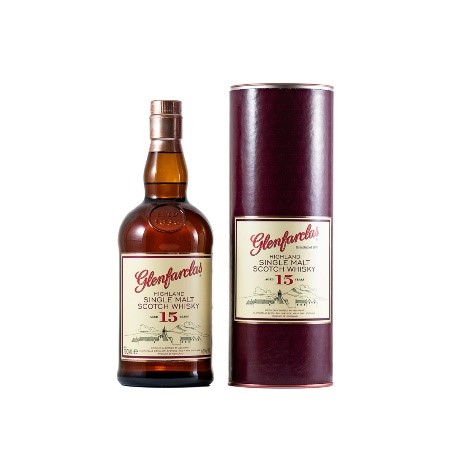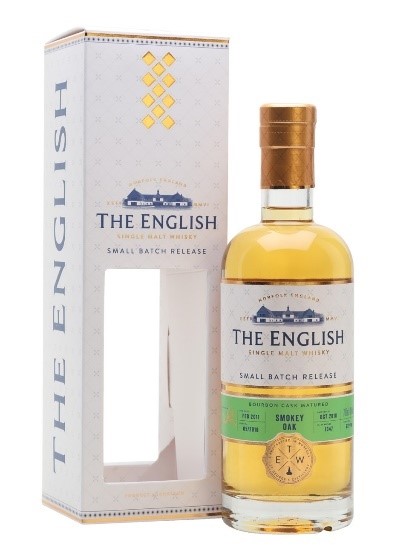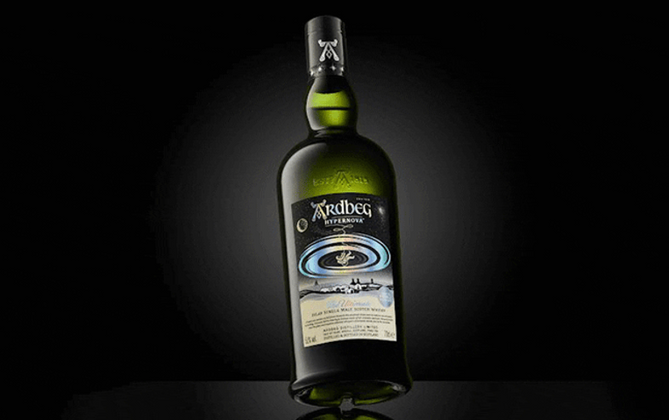What is Peated Whisky?
Posted by Ivan Myers on 20th May 2024
Peated whisky is known for its complex profile distinguished by a rich, full deep and smoky flavour. While it may require some getting used to, it is a unique whisky that leaves enthusiasts drawn to the earthy notes of a campfire. With a range of styles, smoke levels, and regional variations, peated whisky offers a truly unique world of whiskies for you to discover.
But before we get started on peated whiskies for you to explore, first let's delve into the good stuff - understanding its production, the intricate process involved and the unique characteristics that make a truly great peated whisky.
The key to what makes a peated whisky so special lies in its origins, production process and the region in which it is produced.
Let us begin with the peat. Peated whisky has its roots deeply embedded in the history of whisky production, particularly in regions like Scotland, where peat has historically been used as a source of fuel.
For those eager to buy whisky with a rich peated profile, understanding its origins and production will enhance your appreciation of this distinctive spirit.
What is Peat?
Peat is a spongy material formed from dead or partially decaying vegetation or organic matter (primarily plant material) and is typically found in swamps, wetlands, peatlands, and bogs formed over thousands of years. Peat contains a high carbon content, essentially making it a supercharged pellet of energy.
Peat and Scotland
For years, Peat was the most readily accessible domestic fuel found in many areas where the accumulation of water led to the decomposition of plant materials material such as moss, grass and tree roots. This creation of boggy peatland and peat led to the resource’s historic use as a fossil fuel, being fired not only in hearths but distillery kilns as well. In fact, the use of peat as a fuel source for drying malted barley was a practical necessity in regions where other sources of fuel were scarce.
Where peat comes into the malting process?
With some of the world's oldest and largest supply of Peat, Scotland has long been using this readily available fuel source to fire pot stills for the nation’s distilleries.
In the traditional whisky production process, peat was used in the malting stage, where malted barley is dried to stop germination.
As the peat is burned to heat the kiln, it releases aromatic smoke that contains various organic compounds known as phenols. These phenols, including flavours like tar, ash, iodine, and smoke, permeate the malted barley during the drying process.
Over time, the traditional method of drying malted barley using peat fires became deeply rooted in the whisky production process, giving rise to the distinctive unique smoky flavour profile that enthusiasts have grown to appreciate and enjoy.
While the use of peat has shifted from being primarily a fuel source to a flavour-enhancing agent, its influence remains integral to the production of traditional and well-loved Scotch whiskies contributing to the distinct regional styles and variations in the world of whisky.
Why did some distilleries cease to use peat?
The development of Scotland rail led to the wide availability of Coke, a grey, hard, and porous coal-based fuel with high carbon content and few impurities which burned more consistently than peat.
Which regions stuck with peat?
Several distilleries in certain regions of Scotland have continued the tradition of using varying portions of peat during the kilning process despite the availability of alternative fuel sources (coal, gas and coke). These distilleries maintain a traditional and now largely unique style of whisky with lots of variation and flavour.
Certain distilleries go one step further by peating a small quality of barley for their own use such as Laphroaig on Islay, Highland Park in Orkney, and Balvenie in Spey side. This dedication to the use of peat for their own malt production ensures that they can control and maintain the unique and varied flavours that have become synonymous with their brands. The commitment to this traditional method has allowed these distilleries to create a niche for themselves in the whisky market, catering to consumers who appreciate the rich, complex and diverse flavour profiles achieved through the use of peating barley.
How is peated whisky made?
Barley can be peated or unpeated. The intense and smoky flavour of peated whisky makes its way into the whisky during the malting stage of production. To make peated whisky, barley is kilned the same way as unpeated malt but it is dried ‘peated’ using a peat-fired kiln for up to 60 hours to halt the malting process. The intense and smoky flavour originates from the compounds released by the peat fires during the drying of malted barley. This process creates a variety of aromas and flavours including hints of sulphur, saline, diesel, leather, meat, moss, pine, and savory charred wood.The smoke is blown into the drum into the grain until the barley is ‘heavily peated’. This is then carried through their entire whisky production process from mashing and fermentation to distillation to maturation. The duration and intensity of exposure to the peat smoke and the characteristics of the peat itself dictate the strength and complexities of the flavour.
Where Is Peated Whisky Made?
Mainly Scotland.
In Scotland, the five main areas of peated whisky production are the Lowlands, Highlands, Speyside, Campbeltown, and Isaly. Each region offers its own unique and vast range of profiles and styles of Peated whisky.
The Lowlands are located north of the Scottish-English border, The Lowlands are known for producing softer, mellow-flavoured whiskies with delicate notes of toffee, toast, and sweet honeysuckle. The lighter characteristics of Lowland whiskies balance the smoky flavours of peat, making them an ideal base for blended Scotches.
The Highlands offer a diverse range of light and fuller-bodied peated whiskies, although not they are not the main type of whisky produced in this region. Notable Peated whiskies from the highlands include the Oban 14 and various styles from Highland Park.
Speyside is home to over half of Scotland's active distilleries and is recognised for its fruit-flavoured whiskies infused with a subtle hint of smoke. Some whiskies from this area are aged in sherry casks, adding distinct notes of dried fruits and nuts. For those new to peated whisky, Ben Riach. The Smoky Twelve offers an introduction to this style with its gentle waft of smoke.
Campbeltown Peated whiskies tend to have more of a delicate smoke profile, with subtle mineral notes and robust character.
Islay is the largest of the Hebridean Islands, located on the southwest coast of Scotland. It houses nine distilleries and is globally renowned for its production of peated whisky, despite its relative remoteness.
The famed Islay distillery includes the legendary Ardbeg Distillery, Laphroaig, Lagavulin Bowmore and Bruichladdich which is one of Islay’s oldest facilities.
The famed Islay distilleries produce some of the most heavily peated whiskies in the world, making the island a popular destination for tourists looking to taste some of the world's most popular peated whiskies.
Outside of Scotland
While Scotland is renowned for its peated whiskies, it is not exclusive to Scotland. Several other countries around the world have also embraced the use of peat in their whisky-making processes, contributing to the diversity and richness of the global whisky market.
India, Japan, and New Zealand, for example, have all established their own peated whisky traditions, incorporating unique interpretations, expressions and distinct styles while showcasing local elements and techniques into the production process.
Japan’s peated whiskies tend to be less smoky than Scottish Peated whisky, with the exception ofthe smoked Hakushu whiskies. Due to the presence of rich peat in the Ishikari River basin, peated whisky is common in the area, adding a unique regional touch to their offerings.
India is home to many peated whisky brands despite having no local peat sources including Paul John and Amrut. Interestingly, Indian distilleries have effectively navigated this challenge by importing peated malt or peat bricks from various regions around the world, including Europe, Asia, and the United States.
America is also home to several producers of peated whisky including the Westland Distillery in Seattle, Balcones in Texas, and McCarthy’s in Oregon.
How do we measure peatiness?
‘Peatiness’ is measured using PPM (phenol parts per million), which is the quantity of phenol in the malt. Light whiskies measure around 10 PPM, medium whiskies measure around 10 – 30 PPM and heavily peated whiskies measure 30 PPM – 50 PPM. Some distilleries such as Bruichladdich craft whiskies (such as their Octomore whiskies) with 167ppm to over 300ppm in one case. They are called Super-Heavily Peated.
The PPM rating however only measures phenol parts per million and is not an indication of taste, with varying tastes of whiskies of similar PPM.
How Does Aging Affect Peated Whisky?
Aging plays a crucial role in the development and maturation of peated whisky, particularly in cask maturation. Gradual reduction of the intense peaty and smoky flavours over time called ‘the angel’s share’ can be due to several factors, including the evaporation of whisky, prolonged contact with the wood of the cask, and general mellowing.
As peated whiskies age, the harsher phenolic compounds derived from peat tend to integrate more with other flavour components, leading to a smoother and more refined overall character.
Best Peated Whisky Recommendations
It's important to note that the distinctive peaty and smoky flavours that enthusiasts often seek can diminish to a certain degree in older peated whiskies, particularly those aged over 18 years and therefore it's essential for enthusiasts to consider their preferences when selecting peated whiskies of varying ages.
Those who favour intense peat flavours may find that younger peated whiskies such as Ardbeg and Laphroaig better capture the robust and smoky flavour they desire.
For those seeking a more balanced and nuanced flavour profile, older peated whiskies such as Lagavulin 16 and Caol Ila 12can offer a sophisticated and well-rounded tasting experience.
Ardbeg Hypernova Single Malt Scotch whisky is a truly extraordinary expression from Ardbeg whisky, renowned for pushing the boundaries of peated whisky. Possibly the smokiest dram in the world, Hypernova possesses a malty magnitude never before experienced. It is peated at a ridiculous 170ppm of phenols.
This is like candy floss made of ashes and bonfire smoke. It just radiates flavour in every direction in the mouth for an unforgettable experience. It’s big, it’s intense, and it’s pulling palates into a whole new dimension.

Highwayman Batch #3 Fires to Floods Peated Single Malt whisky offers a rich and complex palate of savoury HP sauce, black liquorice, damp tobacco, the indulgent sweetness of brown sugar and sweet cigar smoke followed by notes of black cherry and boysenberry. With a medium-long finish with subtle yet rich flavours of balsamic reduction and an integrated earthy smokiness.

The English Whisky Company Small Batch Smokey Oak Single Malt whiskyis an award-winning single malt matured in ex-bourbon barrels. As the name implies it is heavily peated to 67ppm. A real peat monster.
Earthy, coastal and complex Longrow Peated NAS Single Malt Scotch whisky is full-bodied and is one of the peatiest whiskies available, having phenol levels matching the likes of Ardbeg.
Matured in both sherry and bourbon casks it has a deliciously balanced palate of peat-soaked vanilla, dry, pleasantly spicy peppery malt and a vibrant coastal freshness with kelp and cocoa in the fade, it is no surprise for many that it's the best non-Islay peated malt on the market.
As the first peated single malt whisky, Yamazakura Asaka was created using peated spirit and matured for just over 3 years. The taste is elegant with hints of coconut, toasted bread and subtle hints of liquorice. With a range of compelling aromas and flavours, it is a fine workmanship whiskey, to be savoured and drank neat.
Port Charlotte 10yo Heavily Peated
Triple distilled through tall, narrow-necked stills Port Charlotte 10yo Heavily Peated from Bruichladdich Distillery is a rich and aromatic spirit that combines the power of peat with elegance and finesse. With black-pepper spice and a thick layer of peaty smoke layered with richer notes of stewed apples and sultanas, and a touch of vanilla toffee.
Matured in Pedro Ximénez Sherry, Oloroso Sherry and Port casks, Glendronach Traditionally Peated Single Malt Scotch whisky pays homage to the earthy peat-smoked character of early 19th century Highland malts. On the palate, you will find dark chocolate infused with orange citrus, golden syrup, butterscotch, creamy and buttery raw cake mix, and stewed dark fruits. With a finish of fruits of the forest, smoked oak and toasted barley.

Ledaig 18yo DL OP Single Malt Scotch whisky is part of the Douglas Laing Asian friendship series and is an especially unique bottle. One of 289 bottles worldwide, the whisky boasts no colouring, no chill filtration, and a natural cask strength of 54.5%. On the nose, the bottle is bursting with smoked bacon followed by sweet peated barley. On the palette, a treacle develops to a dry earth soil flavour with cured meats and damp ash. To finish, a long and smoky warmth with slight saline aside from burnt wood awaits. A sublime combination.
Bakery Hill The Blunderbuss Single Malt whisky is the result of a 2-year collaboration between Bakery Hill Distillery and Hop Nation Craft Brewers. Beginning in 2013, after spending 6 years in American Oak ex-Bourbon barrels, the whisky was matured for a final year in a barrel that was used to mature Bakery Hill Peated Single Malt for over a decade.The barrel was then used by Hop Nation to mature their Kalash Russian Imperial Stout. This barrel was then taken back to Bakery Hill and finished off for a year. With a complex flavour of honey, breadcrumbs, orange, lavender, mussels, stout and nougat. It is long and lengthy with a sweet and savoury, creamy, buttery and full mouthfeel.
Glenglassaugh 'Torfa'is a unique expression that is full-bodied and has a peaty, phenolic nature. It is quite different to the usual style of whisky produced in the Highlands with toasted barley, hints of fruit and a sweet peat.
Hakushu 18yo Suntory 100th Anniversary Single Malt whisky brings a new angle to peated whisky. Matured in a variety of casks, it is a fresh and gentle single malt with a softly smoky core that brings aromas of green apples, jasmine blossom and sweet peat smoke to the nose. The palate is filled with notes of oven-fresh cookies and vanilla, with waves of lingering sweet smoke on the finish.
How to drink peated whisky?
The diverse range of profiles and intensities found in peated whiskies often calls for careful consideration in terms of how they are enjoyed.
Many whisky enthusiasts prefer to savour peated whiskies neat, allowing the intricate aromas and flavours to unfold gradually on the palate. Sipping it slowly enables one to appreciate the nuanced complexities that develop over time, offering a rich and immersive tasting experience.
For those who may be new to peated whisky, it's important to approach it with an open mind and perhaps a willingness to acclimatise to the robust smoky characteristics that define this style. Adding a few drops of water can help to temper the intensity of the smoke, allowing the other flavours and aromas to come to life. This helps uncover the intricate layers of flavour that allow you to develop an understanding and appreciation of the unique attributes that peated whiskies have to offer.
Food pairing with Peated whiskies include Blue Cheese and dark Chocolate. Put a few drops on some oysters and take it to another level.
Finally, enjoy it! Tasting events are a great way to sample a range of new whiskies, without committing to a full bottle purchase. It is a great way to work out what your preferences are - with over 1000 different expressions stocked at World of Whisky, this may take some time!
Once you've discovered your favourite peated whiskies, you can easily buy whisky online from our wide selection of whiskies from around the world. Whether you're looking for Scotch peated whiskies, Irish peated whiskey, Japanese peated whisky, or any other variety, you'll find plenty of options to choose fromat World of Whisky.

.png)
